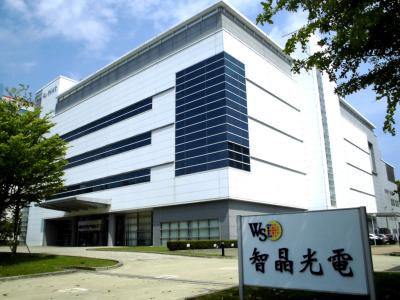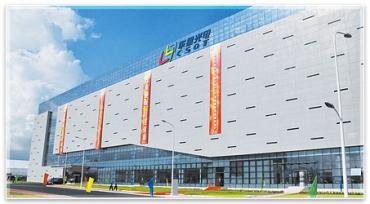Flexible OLEDs: introduction and market status - Page 15
DDaily: BOE failed to pass Samsung's and Apple's OLED quality tests
Earlier this year, reports from Korea suggested that Samsung Electronics is looking to order some OLED panels from China's BOE - including for its flagship S21 smartphone to be announced later this year.

A new report from Korea's DDaily suggests that BOE failed to pass Samsung's display quality test. Samsung Electronics is likely to retain Samsung Display (partly owned by SE) as an exclusive AMOLED supplier for its 2020-2021 smartphones.
CLSA says SDC faced a sharp decline in OLED demand in Q1 2020, sees meaningful growth in Q3
CLSA says that Samsung Display saw a decline in demand for OLED panels in Q1 2020, and its flexible OLED fab utilization rate dropped to 40%.

In April demand from Chinese smartphone maker recovered and CLSA expects meaningful growth in OLED smartphone demand with Samsung's utilization rates exceeding 90% in Q3.
Researchers fabricate an efficient flexible OLED that uses Mxene electrodes
Researchers from Seoul National University developed a flexible green OLED device that uses 2D titanium carbide MXene as a flexible and transparent electrode. The display achieved an efficiency of 100 cd/A, comparable to ITO-based devices, while showing good bending stability.
The researchers say that the MXene electrodes are much more flexible than ITO electrodes and this material could hold the key towards highly flexible transparent conductive display electrodes.
DSCC details the iPhone 12 screens and OLED suppliers
DSCC posted an interesting blog post, in which they detail what they believe to be Apple's iPhone 12 smartphone family specifications.
So we start with the iPhone 12, which will use a 5.42" 2348x1048 (476 PPI) flexible AMOLED display, produced by Samsung Display. DSCC believes the iPhone 12 will use a Y-OCTA integrated touch. DSCC believes that while BOE did not manage to get its panel to the iPhone 12, it may become a supplier in 2021 to the iPhone 12s - if all goes well with the iPhone 12 Max (see below).
A Q&A with Dr. York Tsai, Wisechip's Vice President of R&D
WiseChip Semiconductor, based in Taiwan, is one of the world's leading PMOLED maker (in fact in 2015 Wisechip said it's the world's second largest). Wisechip is developing next-generation PMOLED displays, including flexible panels, transparent panels and Hyperfluorescence/TADF PMOLEDs.

WiseChip recently announced its first, and the world’s first, Hyperfluorescence display, using TADF materials provided by Kyulux. Can you tell some more about this display and its properties?
This 2.70 128x64 product is adopted mostly in industrial products. The size matters in such market but the main problem was to increase the brightness due to the limited efficiency of the fluorescence emitters. The Hyperfluorescence technology helps to settle the problem and can reach up 2.5 times brighter. It performs much better readability so users do not have to stand right in front of the device. This feature adds to the value of the end product.
Samsung Display shuts down parts of its A3 OLED fab as fire breaks out
Korean media reports that due to a fire at Samsung's A3 OLED production fab in Asan, the company had to shut down the production at some of the lines. Luckily, there were no casualties.

Samsung Displays says that this won't effect the supply of OLED panels, but the extent of the damage is not yet determined.
Digitimes: CSoT plans to build its 2nd flexible AMOLED line in Wuhan
Digitimes reports that TCL's CSoT is planning to build a new flexible OLED production line in Wuhan. The T5 line is still only at an early planning stage, but investment could reach about $1.4 billion.

The T5 line will be CSoT's 2nd flexible OLED line - it's current T4 line (which has a monthly capacity of 45,000 6-Gen substrates) started production in 2019.
EDO starts producing tablet and laptop rigid and flexible AMOLEDs, available on the OLED Marketplace
China-based EverDisplay (EDO) has recently started to produce AMOLED displays for tablets and laptops. The first rigid AMOLEDs are a 11" 1728x2368 and 15.6" 3840x2160 4K rigid displays for tablets and laptops. The first flexible ones are a 12.8" 1888x1728 panel for tablet-like devices and a 15.6" 3840x2160 4K flexible AMOLED for laptops.

These new 11", 12.8" and 15.6" AMOLEDs are now available in the OLED Marketplace. This is great news from EDO, as up until now Samsung Display was the exclusive supplier of AMOLEDs for tablets and laptops. If you are interested in this display for your device or new project, contact us now, or check out more information over at the OLED Marketplace.
BOE to integrate Qualcomm's fingerprint sensors in flexible AMOLED displays
BOE and Qualcomm announced plans to establish a strategic collaboration to develop innovative display products featuring Qualcomm's 3D Sonic ultrasonic fingerprint sensors. BOE have already started to embed Qualcomm's sensor in its flexible OLED displays.
BOE also says that this collaboration will result in a streamlined supply chain and reduces the bill of materials (BoM) and R&D expenses expenses. BOE says that it will start shipping the integrated panels and sensors in H2 2020.
Omdia: Smartphone AMOLED shipments to rise in 2020 in a plunging smartphone market
Omdia (IHS Markit) says that even though global demand for smartphones in 2020 will drop 13% compared to 2019 due to the Coronavirus pandemic, the demand for smartphone AMOLED displays will increase by 9%. AMOLED penetration will rise sharply in 2020.

In 2020 513 million smartphone AMOLED panels will ship, up from 471 million in 2019. The growth will be entirely driven by flexible AMOLEDs which will see a 50% surge in production in 2020. Rigid OLED shipments will decline 12% in 2020.
Pagination
- Previous page
- Page 15
- Next page




